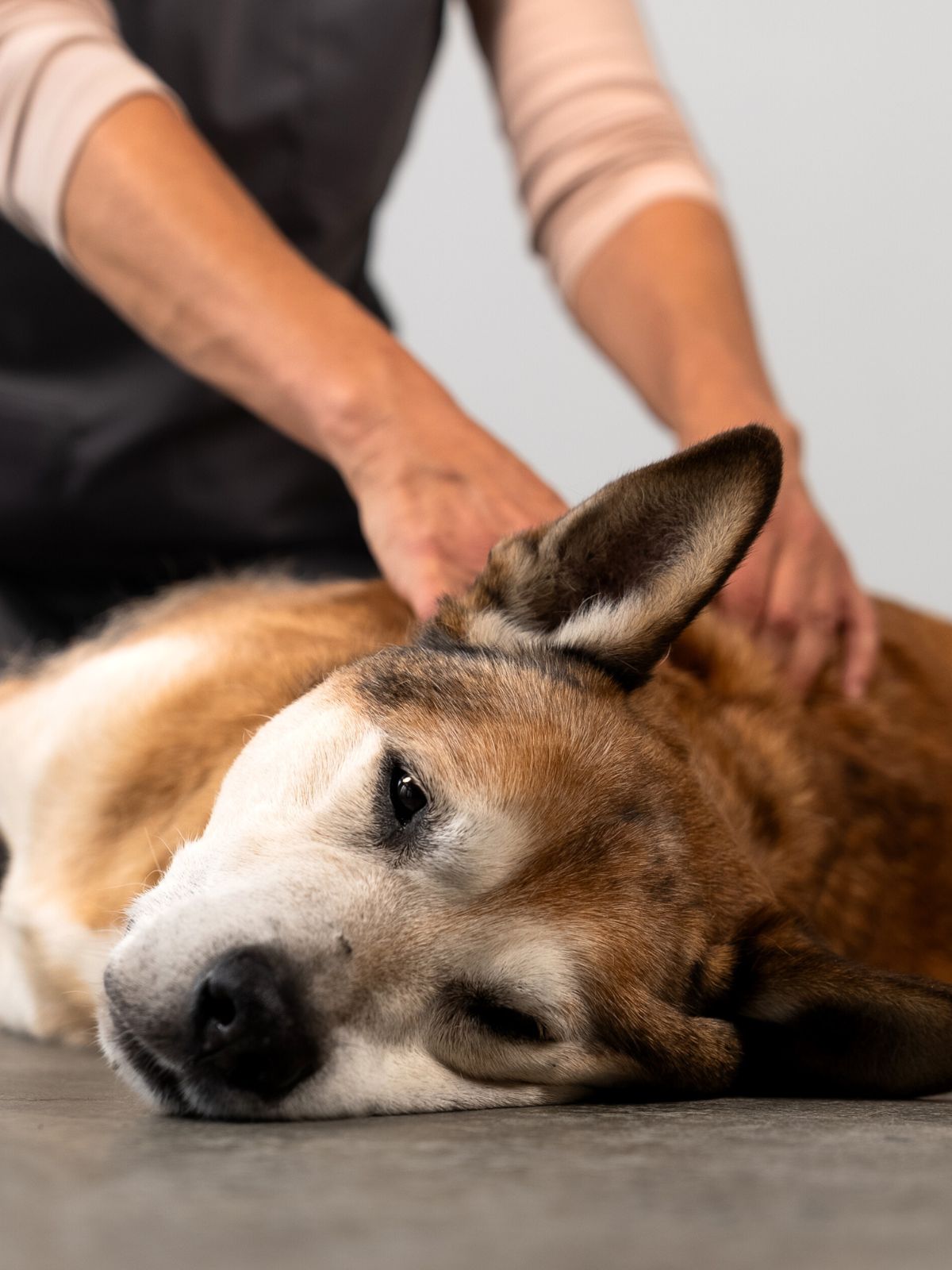Relaxation For Dogs
In-Home Therapeutic Massage to Reduce Tension, Calm the Nervous System, and Promote Physical and Emotional Wellbeing
Understanding Relaxation For Dogs
Relaxation for dogs is more than a luxury—it’s a therapeutic tool that supports physical recovery, reduces stress, and promotes musculoskeletal health. Many dogs, particularly those recovering from injury, living with chronic pain, or coping with anxiety, develop muscular tension, shallow breathing, and sympathetic nervous system dominance. Over time, this tension can contribute to stiffness, reduced mobility, and behavioural changes.
At Paws4Paws, we use in-home relaxation techniques as part of a broader physiotherapy framework to support your dog’s comfort, emotional regulation, and physical wellbeing. These sessions are designed to downregulate the nervous system, release stored tension, and encourage soft tissue relaxation—helping your dog move more freely and rest more deeply.
Relaxation therapy is particularly beneficial for:
-
Dogs with chronic pain or age-related discomfort
-
Anxious or hypervigilant dogs with poor body awareness
-
Canine athletes during recovery periods
-
Dogs with compensatory muscle tension due to injury or arthritis
-
Senior dogs with reduced flexibility or sleep disturbances
By incorporating relaxation into a structured rehabilitation program, we can support healing, improve circulation, reduce muscular guarding, and enhance your dog’s overall quality of life.

Therapeutic Techniques Used to Promote Relaxation in Dogs
At Paws4Paws, we integrate a range of evidence-informed manual therapies and calming interventions to support relaxation for dogs as part of a holistic, in-home rehabilitation program. These techniques aim to reduce muscular tension, calm the nervous system, and create the optimal conditions for tissue recovery, mobility, and behavioural stability.
Depending on your dog’s clinical presentation, a relaxation-focused session may include:
-
Remedial massage to increase circulation, reduce muscle tone, and promote physical comfort
-
Myofascial release to address fascial restrictions and improve tissue mobility
-
Effleurage and compression techniques to soothe hyperactive muscle groups and promote a parasympathetic (rest-and-digest) state
-
Gentle stretching and passive range of motion to relieve stiffness and improve flexibility
-
Acupressure-based techniques to support systemic balance and reduce areas of hypertonicity or pain guarding
These techniques are especially useful for dogs who are not yet ready for intensive physical rehabilitation, or for whom emotional tension, anxiety, or chronic discomfort are limiting factors. Over time, relaxation therapy helps to improve body awareness, reduce behavioural reactivity, and support a more fluid, confident movement pattern.
Why Relaxation Therapy Matters
Relaxation therapy plays a critical role in both the physical and emotional health of dogs—particularly those recovering from injury, managing chronic conditions, or showing signs of tension-related dysfunction. Persistent muscular guarding, stress-related posture changes, and nervous system hyperactivity can significantly impact a dog’s mobility, behaviour, and quality of life.
By incorporating structured relaxation for dogs into rehabilitation, we can:
-
Interrupt the cycle of tension, discomfort, and compensatory movement
-
Improve circulation and lymphatic flow to support tissue healing
-
Reduce sympathetic nervous system dominance (fight-or-flight) and promote parasympathetic regulation
-
Enhance proprioception and body awareness in anxious or high-arousal dogs
-
Prepare the body for more active rehabilitation phases by reducing pain and stiffness
-
Improve overall comfort and restfulness—especially in ageing dogs or those with chronic conditions
Relaxation is not a passive or indulgent process; it is a strategic, therapeutic intervention that complements hands-on rehabilitation and targeted exercise. When integrated into a broader treatment plan, it supports recovery, mobility, and resilience—helping your dog feel better, move better, and age with greater ease.

